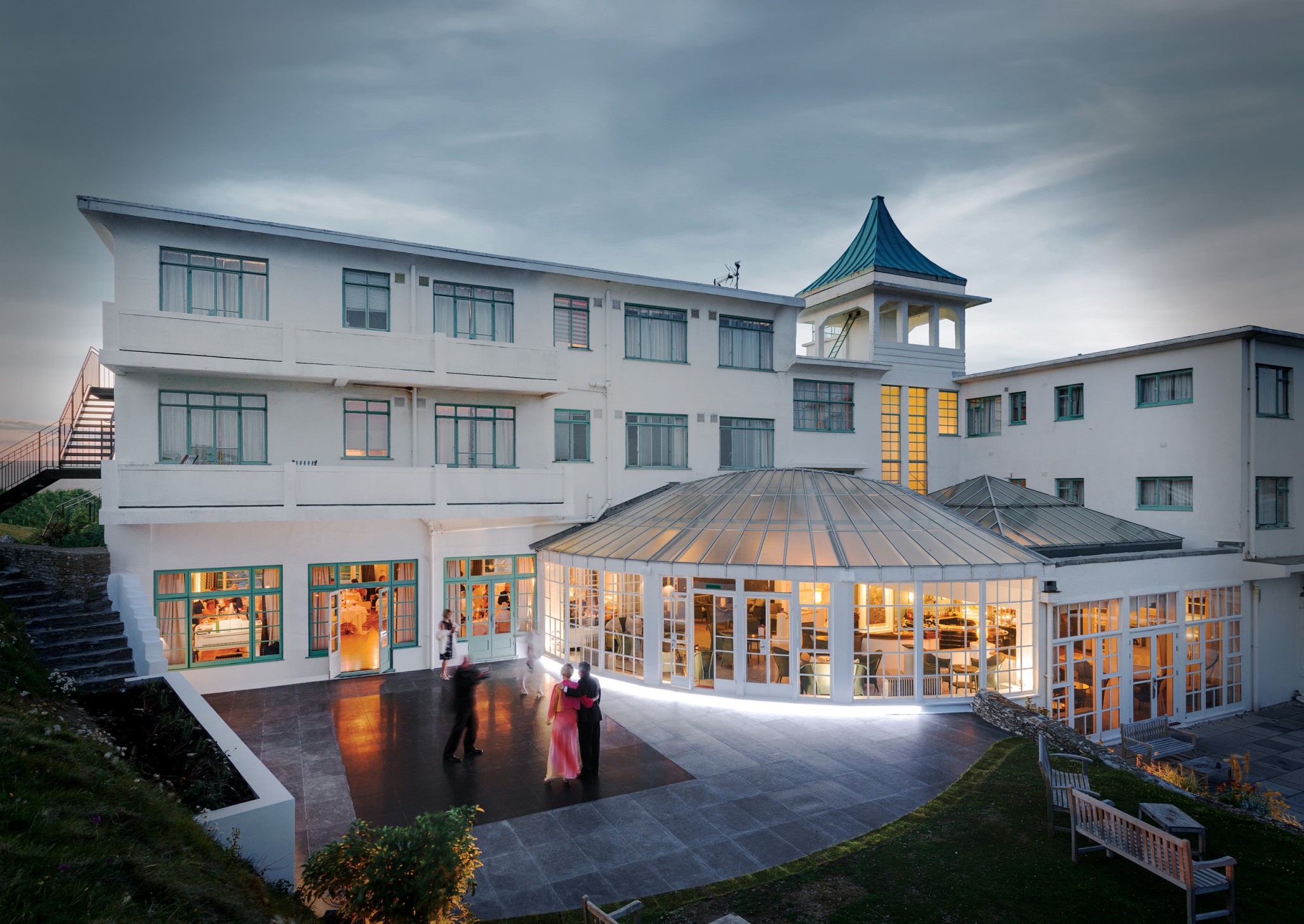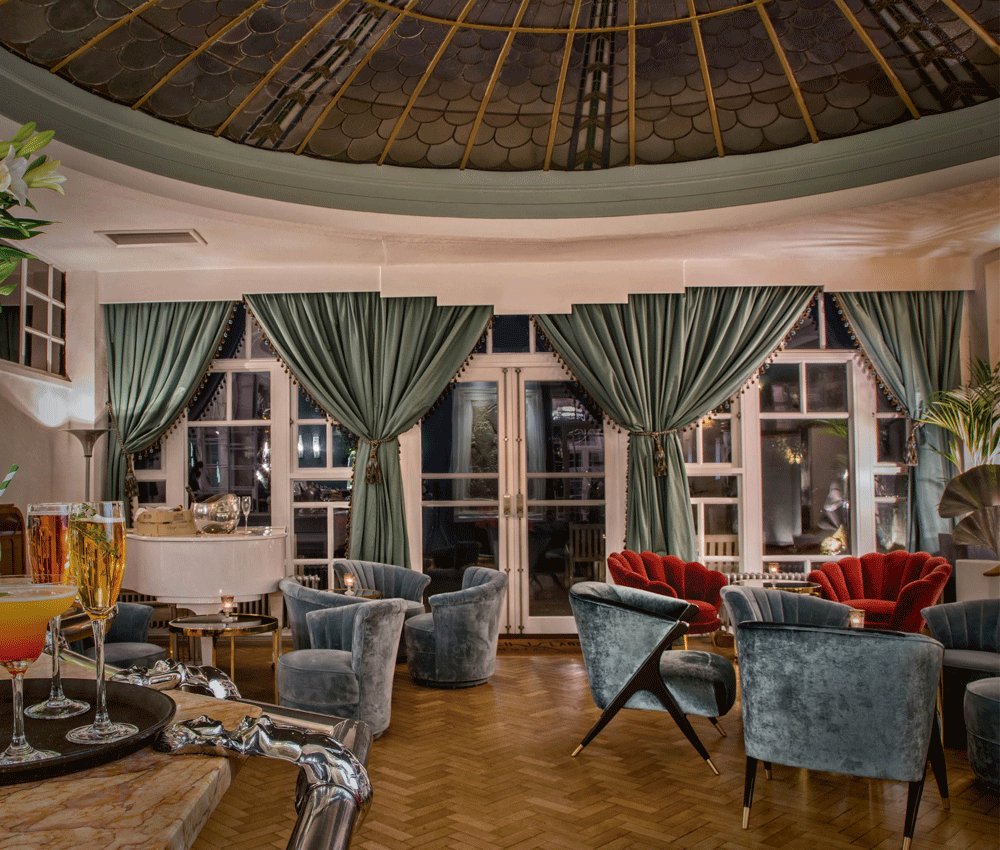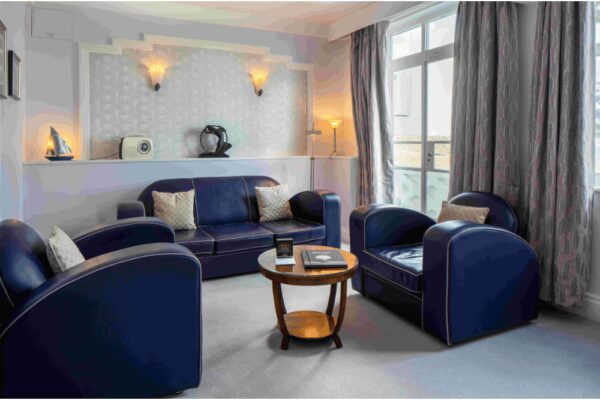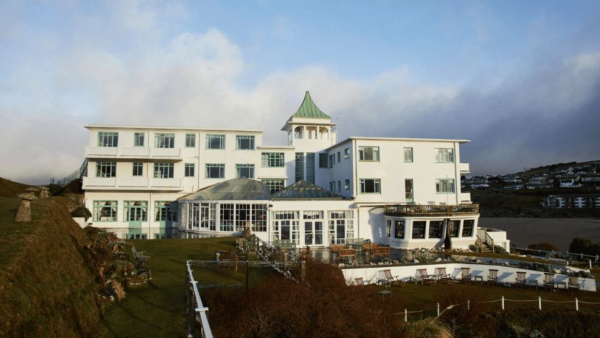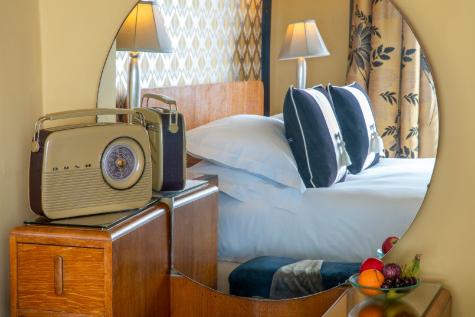Whilst its heyday may have passed, the influence of Art Deco can still be seen in contemporary design, architecture, and fashion.
Nestled on a picturesque island off the coast of Devon, Burgh Island Hotel is a true Art Deco gem. This iconic hotel was a former party island and still to this day embodies the glamour and elegance of the Roaring Twenties, with its striking Art Deco architecture and lavish interiors.
From the moment you arrive at the island by sea tractor, you are transported back in time to the golden age of Art Deco. You’ll spot the hotel’s iconic white facade, adorned with geometric shapes and sleek lines, which immediately catches the eye. Step inside, and you’ll be greeted by a grand entrance hall featuring marble floors, mirrored walls, and a sweeping staircase, all perfectly showcasing the opulence and extravagance of the Art Deco era in this Devon Island hotel.
Each of the hotel’s rooms and suites is individually and thoughtfully designed with Art Deco furniture, vintage furnishings, and rich colour palettes creating an atmosphere of timeless elegance. Each room and suite is unique and spectacular, designed with extravagance in mind. From the stylish suites with huge beds and breathtaking views of the coastline to the cosy rooms with Art Deco touches, and the truly spectacular Beach House (and writing retreat of the iconic Agatha Christie), every detail has been carefully curated to transport guests back in time.
The hotel’s dining options are equally as impressive. The elegant Grand Ballroom, with its glittering chandeliers and artfully designed windows, is the perfect setting for a memorable dining experience. Indulge in a sumptuous meal while surrounded by the hotel’s iconic Art Deco decor, and you’ll feel as if you’ve stepped into a glamorous scene from The Great Gatsby. Flapper dresses and black ties are not *always* required, but the island hotel certainly welcomes guests who are dressed to the nines and seeking an occasion to Fox Trot!
Burgh Island Hotel is a testament to the enduring allure of Art Deco. Its timeless elegance and striking aesthetic continue to captivate guests from around the world, making it a must-visit destination for lovers of design and history. Experience the magic of the Roaring Twenties at this iconic Art Deco hotel and create memories that will last a lifetime in a truly captivating coastal setting.
